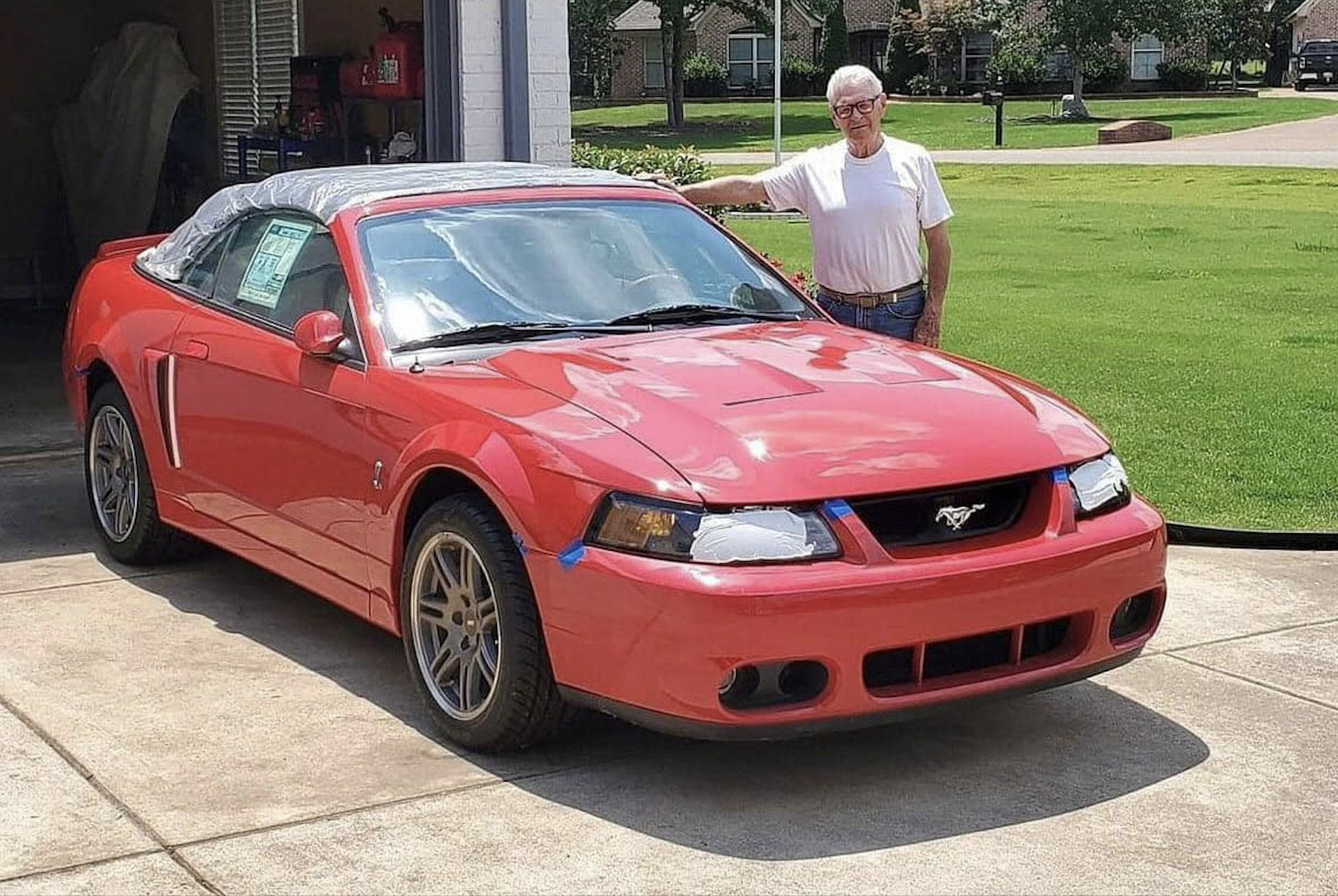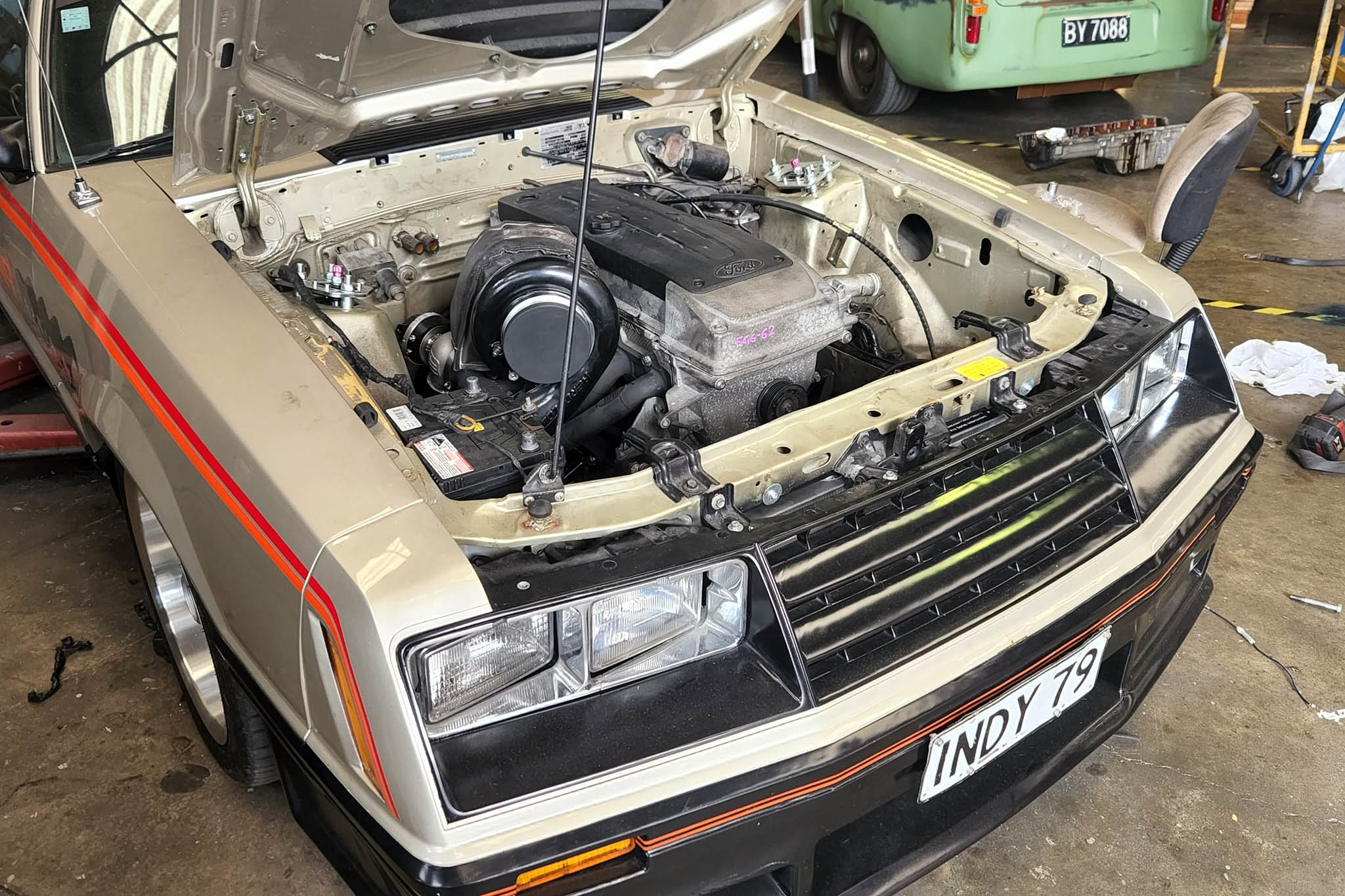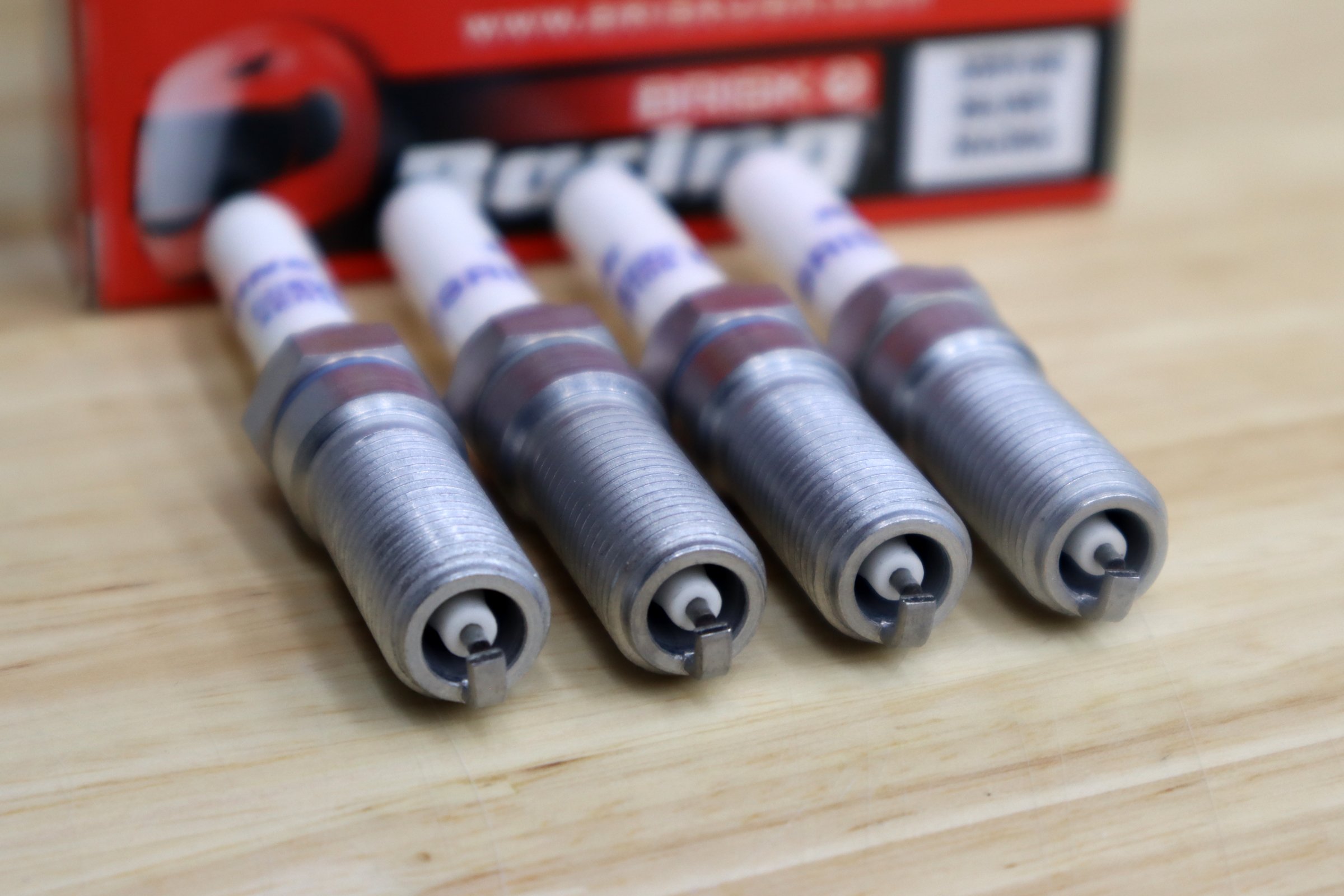There is a famous quote that goes something like, “God made man, and Samuel Colt made them equal.” Of course, this is in reference to the Colt Peacemaker Single Action Army (SAA) pistol and many other firearms that were popular in the American West during the late-1800’s.
Well, much like Samuel Colt made men equal in the wild west, the good folks at Whipple Superchargers are doing the same for auto enthusiasts with a penchant for speed. Since the first supercharger patent was granted to German Inventor, Gottlieb Daimler, around the same time Samuel Colt’s Pistol was hanging on the hips of many a vaquero, it seems fitting that the spirit lives on that way.
Still, with all this talk of equality, we don’t want you to be confused…not all superchargers are made equal. That much is evident from the video above. Instead, it’s what forced induction has done for the droves of auto enthusiasts over the years to make them equal that we find a similarity.
Forced induction – the thing that enables a small block to hang with a big block, a four-cylinder to outrun an eight, and gobs of horsepower coaxed out of a seemingly timid powerplant simply by bolting on a blower. Forced induction is just plain fun, and it’s something that’s evened the proverbial playing field for so many builds.
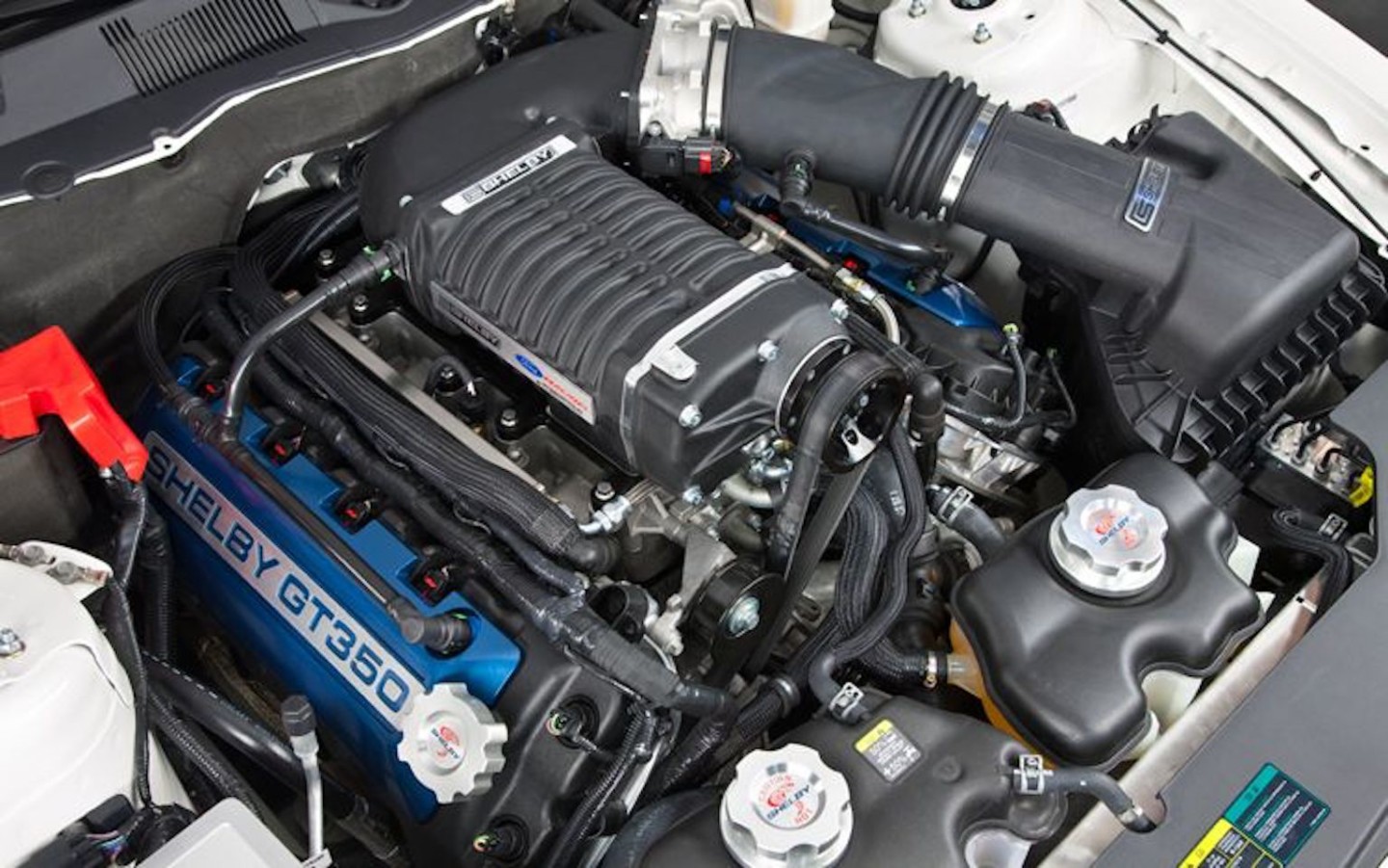
There is a Whipple kit for virtually every application and this Shelby GT350 looks incredible sporting a monster blower.
So, the streets and highways are still like the wild west, only now, instead of a “six-shooter”, these desperados are packing twin-screws. The Fresno, California-based Whipple is about as westward as it gets and this inside-look at its manufacturing facility reveals pride of construction that’s becoming increasingly rare. What’s more, is, they’ve been doing it for 30-years!
Josh Godinez, Whipple’s CNC Engineer, explains the process behind each Whipple Supercharger. The meticulous care which goes into each supercharger’s construction is immediately apparent.
“We design all of our superchargers from the point when they’re just a concept – the CAD design, and all the way to manufacturing. We manufacture our own rotors in house and when we do, we keep in mind what Whipple wants out of a supercharger – efficiency. Whether it’s a new port job to get more horsepower. whether it is a new kit, whether it be a race kit for an existing application, we are always working on something new. ” Says Josh.
“The Whipple advantage is that we design and build our own superchargers.” we want to put out the best product that we can we want to put out the product that makes the most power we want to beat everybody else that’s just who we are, it’s in our DNA.”
It’s interesting to hear a manufacturer’s representative talk about something many shy away from – competition. It is the need for speed and will to win that get’s so many of us enthusiasts into the hobby, after all. Isn’t it?
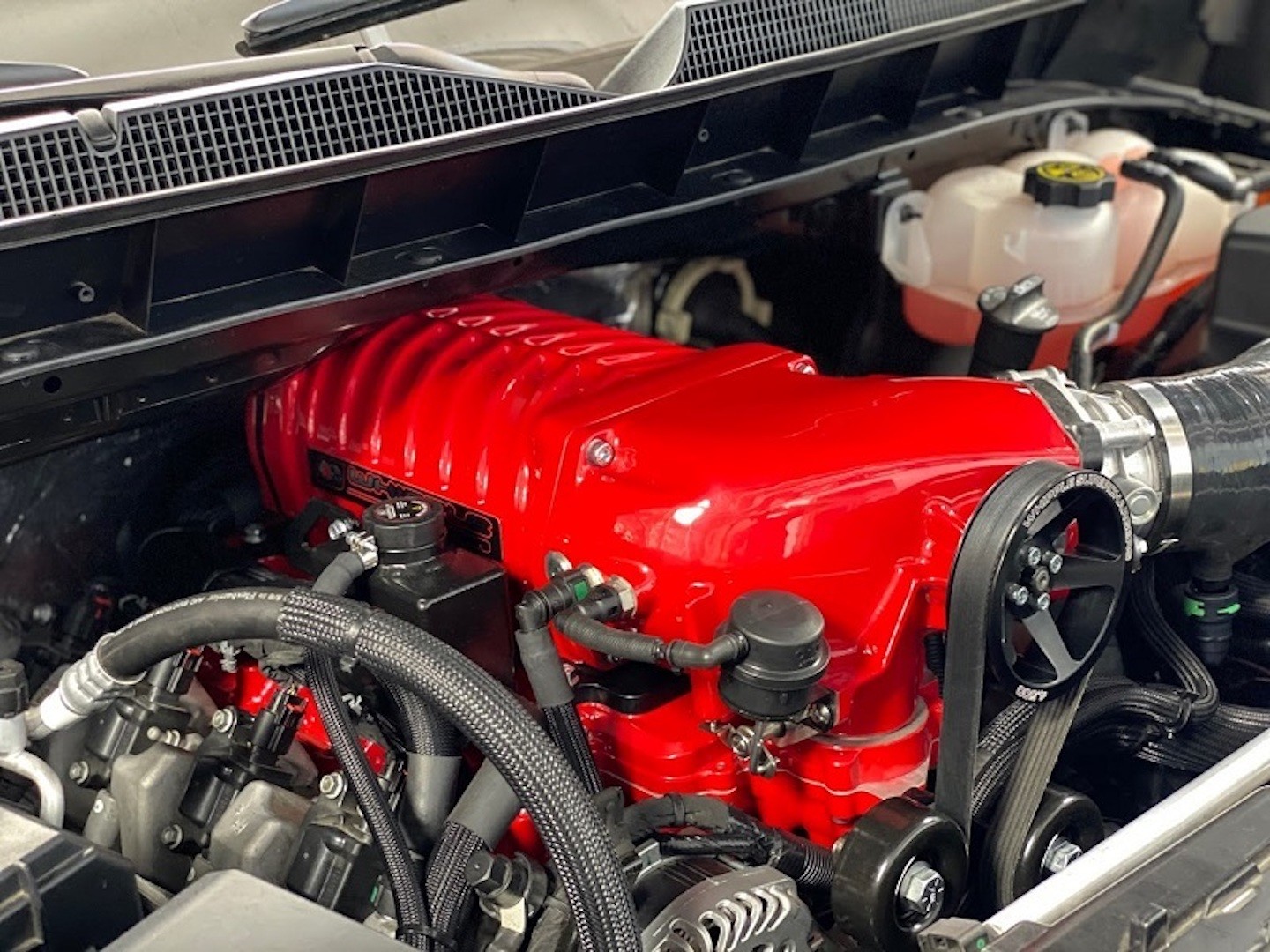
Not to be outdone by the Coyote above, the LS and LT family of engines look menacing with a Whipple on top as well.
The first stage of the process of building a supercharger is for the Whipple team to identify the application that it’s going to be on. From there, they start to identify all of the connections associated with that particular vehicle – be it intake manifold, fuel accommodations, underhood clearances, etc. Then they ask the question, “what do we have to go out and design new, and what can we use that we already have.”
According to Josh, “We try to make sure that everything we’re doing is heading us down a path for success. We’re not rolling the dice and guessing and hoping it all fits. When we work with outside companies we hold them to the same standard we hold ourselves to.”
In the video, there are many parts of the manufacturing process shown, but it’s when we are led to the machine shop that viewers get an inside look where the magic happens – so to speak. Godinez said it best, “I would say the manufacturing process starts right here in my machine shop. We make parts that go into the supercharger. We make the supercharger’s through-shaft. We machine them here, then they go out for heat treat and grind. When they come back, we press them into the rotor blade. We throw it in the machine and then we cut the rotor profile.”
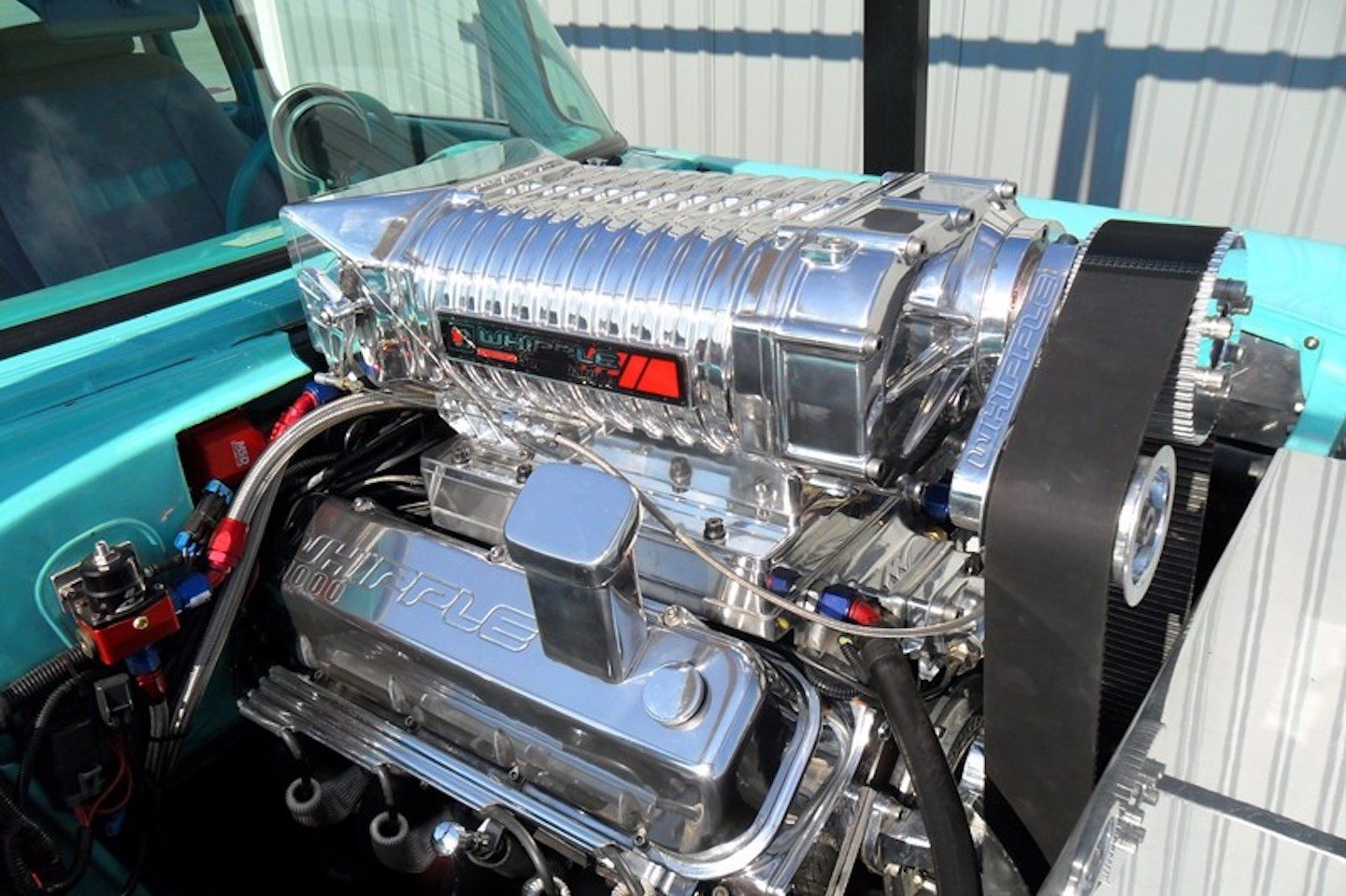
This gleaming example of a Whipple Supercharger is just one finish the blowers can be had in. The wrinkle black is also handsome.
Simply put, Whipple makes superchargers, but more importantly, they make the parts, they cut the rotors, they get the castings made, and once all of that work is accomplished in-house, those parts get coated, cleaned, and moved over to assembly. What leaves assembly is a complete supercharger compressor.
From there it goes to kit assembly. The kit assembly is where they mate the compressor to the rest of the supercharger kit. which includes an intake manifold, intercooler cores, belts, pulleys, and everything else that makes up the kit.
So, much like the plainsman who purchased that Colt Peacemaker for the protection of his herd, self defense, and even playing field the prolific firearm was known for, end-users of Whipple superchargers can have a similar peace-of-mind knowing their blowers are made with a level of care only a hand-crafted and engineered piece of equipment can assure.

